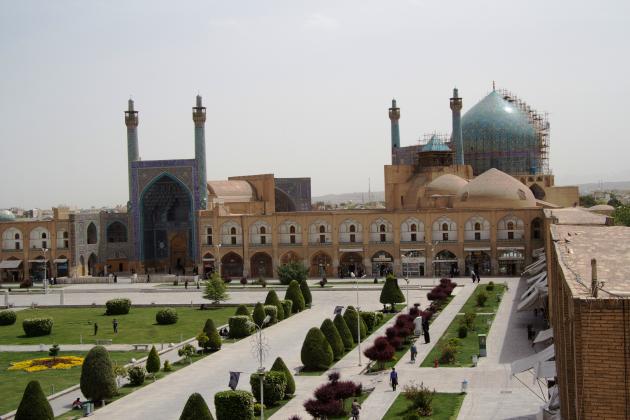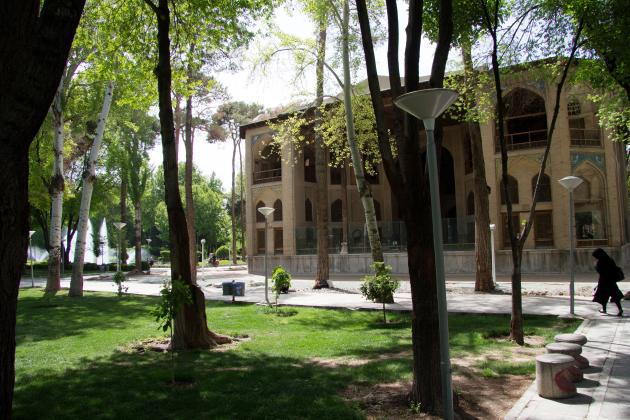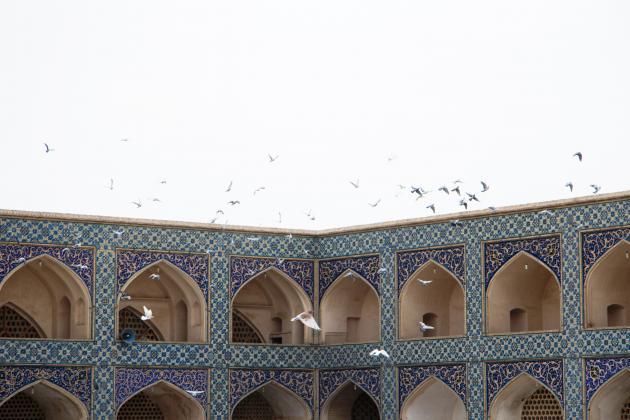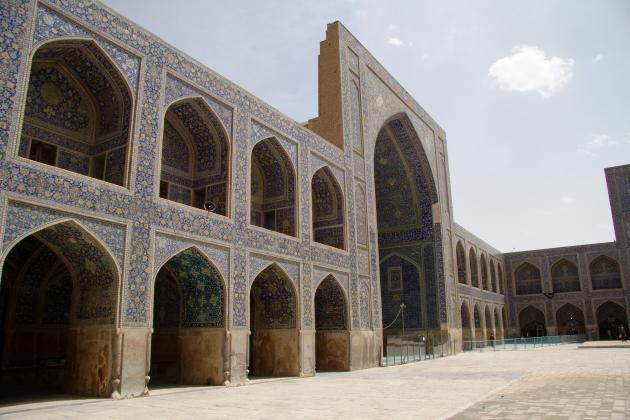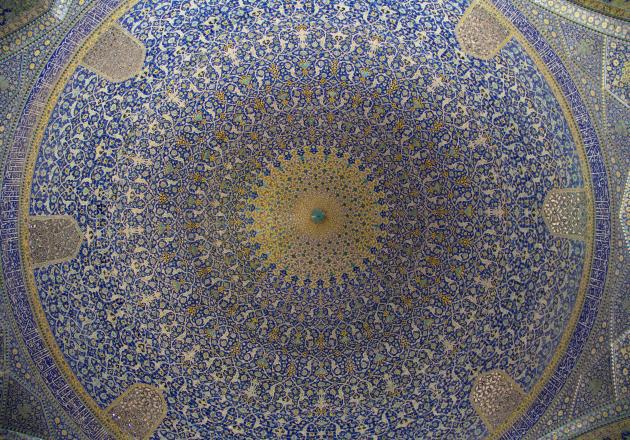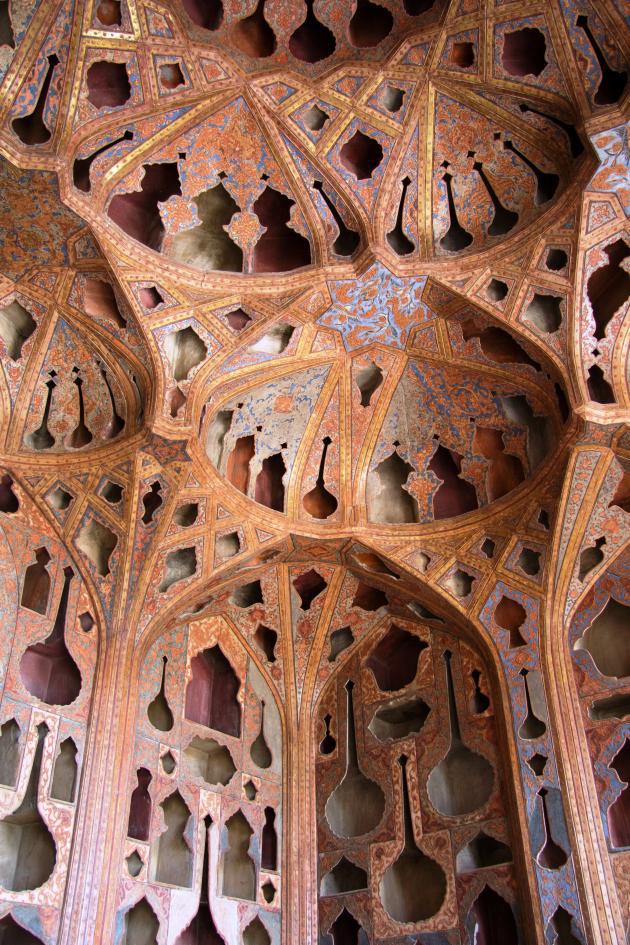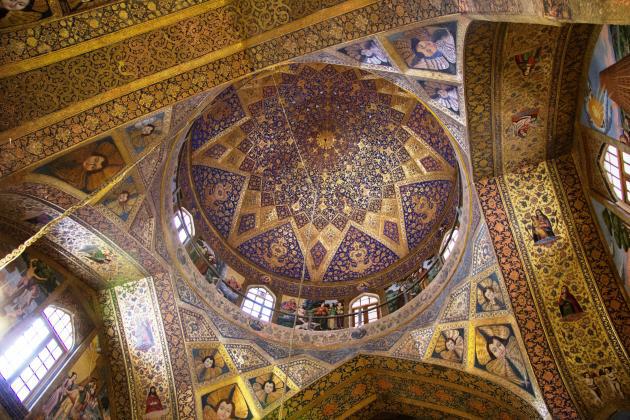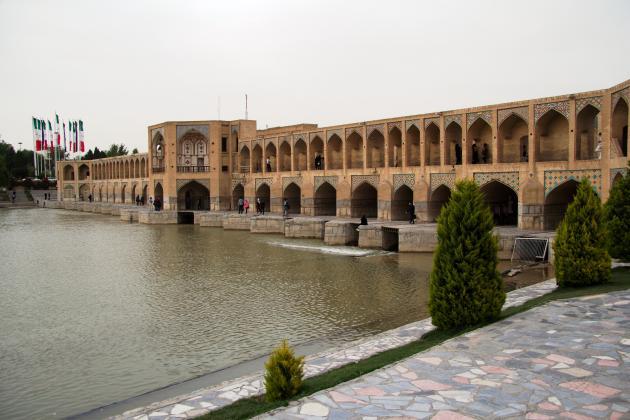Iran is a state of many ethnicities where over a dozen languages are spoken, including, among others, Persian, Baluchi, Luri, Arabic, and Turkish. Unfortunately, the country’s education policy does not take account of this linguistic diversity. By Manutschehr Amirpur
The Islamic Republic of Iran has continued the policy of the old regime in that it only permits the learning of the country′s official language (Persian), even though this contradicts the obligations set out in the constitution. The widespread tradition of ′one country, one language′, which lives on across the Middle East despite the fact that reality is very different, is also alive and well in Iran.
A glance at the situation in neighbouring states highlights the problem. The country that has been known as the Republic of Turkey since the end of the First World War justifies its existence by the doctrine that the population of Asia Minor has only one language and one religion. This doctrine completely ignores the Kurds and the Alevis.
Iraq, Syria, Lebanon, Jordan and Palestine – countries that were practically created on the drawing board by the French and English mandate powers after the collapse of the Ottoman Empire in the wake of the First World War without any thought to ethnic or historical borders – also adhere to this policy. In fact, this policy, which is based on the principle of ′that which must not, cannot be′, is one of the reasons behind the civil wars in Turkey and Iraq.
The misuse of imported concepts
The whole situation becomes complicated when both sides start to use new, imported concepts in their disputes with each other: concepts for which they have not even coined real words in their own languages. For example, they begin to accuse each other of chauvinism, pan-Turkism, pan-Arabism and fascism and speak about nations, nationality, nation states and such like.
While the states of Europe are trying to rid themselves of the virus of ideologies after a number of long and bloody wars and to come together in the form of economic and political communities and communities of values, the politicians of the Near and Middle East are insisting on nationalism with reference to their actual or imagined size and are trying to revive the failed European tradition in another form on their own soil.
There is a certain tradition of misusing such imported concepts. The discovery by German archaeologists and linguists of Iran′s ′glorious′ past was a pretext for exporting the virus of racism to Iran. Iran′s neighbours were not spared this fate, either.
Atatürk′s famous saying, ′Happy the man who calls himself a Turk′, is one such a statement. In Turkey, it is the kind of thing recited in school every morning by a boy and a girl after the singing of the national anthem and before classes as a kind of oath that is repeated by all other pupils. Today, however, because the Turkish government is seeking reconciliation with the Kurds, it claims that the quotation refers solely to citizenship and not to the Turkish people.
In the dispute about mother-tongue instruction in Iran, both academic and unfounded assertions are made. These ultimately lead to violence and counter-violence between representatives of the regime and the activists. The ethnic groups that are not allowed to learn their mother tongue accuse the ′Persians′ of chauvinism and say that they are suppressing the Turkish, Kurdish, Baluchi ′nations or nationality′.
For their part, the Persian-speakers accuse these ethnic groups of separatism, pan-Turkism and pan-Arabism. Referring to Middle Persian Azeri, they say that Azerbaijanis are not Turks and Arabs are not Arabs, because Khuzestan – which once stretched deep into modern-day Iraq – has always been part of Iranian territory and Ctesiphon, the capital city of the Parthians and the Sasanians, was situated close to what is now Baghdad. But these wars of words have nothing to do with the actual situation today.
What is a ′Persian′ anyway?
Iran knows no such ethnic group as the Persians. Does the word refer to the people in the province of Fars? What kind of power does this group have to determine Iran′s language policy? Or does it refer to the Persian-speaking provinces of Khorasan, Kerman, Isfahan, etc.? Hardly. After all, these people refer to themselves as Khorasanis, Kermanis and Isfahanis and nothing else. And even if such an ethnic group did ever exist, when did it ever rule over the entire country, such that it can now impose its rule on Iran?
After the collapse of the Sasanian Empire and two hundred years under Arab rule, the country was predominantly governed by Iranians of Turkish and Mongolian origin. These last two ethnic groups fostered the Persian language not only in Iran, but also in Asia Minor, the Caucasus, Central Asia and India. For example, the language of the court of the Seljuks of Rum in eastern Anatolia was Persian; their capital city, Konya, was a hub of Persian literature and home to Mawlana Rumi, a giant among Persian poets.
The Mongolian Timurids made Persian the language of the court in India, fostered it and kept it alive, even though their original language was Chagatai-Turkish. They didn′t do this for love of a specific ethnic group or out of solidarity with it; they were attracted by the power of the Persian language, the language of Ferdowsi and not by the power of the Iranian people, whom they had already vanquished. The English language exerts the same pull in today′s world, even in those places where people harbour anti-American sentiments.
The allegation of separatism from the other side is historically unfounded. It is correct to say that there have been and still are separatist movements in Iran. However, these come from outside and not from inside the country. The oldest of these were the efforts made by the Ottoman Empire to separate Turkish-speaking Azerbaijan from Iran, a policy that continued until the First World War.
On occasion, the Ottoman army was successful. It occupied Azerbaijan and was repulsed with great loss of life to the Azeris and the Kizilbash (the majority of whom hailed from Anatolia). Both sides often left scorched earth in their wake. Another attempt to conquer was made by the Russian Empire: it led to the annexation of seventeen Iranian cities in Transcaucasia and to the Treaty of Gulistan and the Treaty of Turkmenchay, which the Iranians describe as ′disgraceful′.
The next attempt to separate Azerbaijan completely from Iran was launched during the Second World War when the Allied Forces occupied Iran. Unlike the Russian Empire, however, the Bolsheviks were unable to get what they wanted: this time, the major powers were not playing ball. Besides, the people were not on their side.
The last unsuccessful attempt in this respect was the war started by Saddam Hussein in an attempt to annex Khuzestan. Here too, the Khuzestani Arabs, who today are being accused of separatism, fought on the front line to defend the integrity of their country (modern-day Iran). To do so, they had no need of ethnic ideologies and concepts such as ′nation′ or ′nation state′. Since the Achaemenid era, Iran has always been a state of many ethnicities and has remained in existence even without such imported concepts.
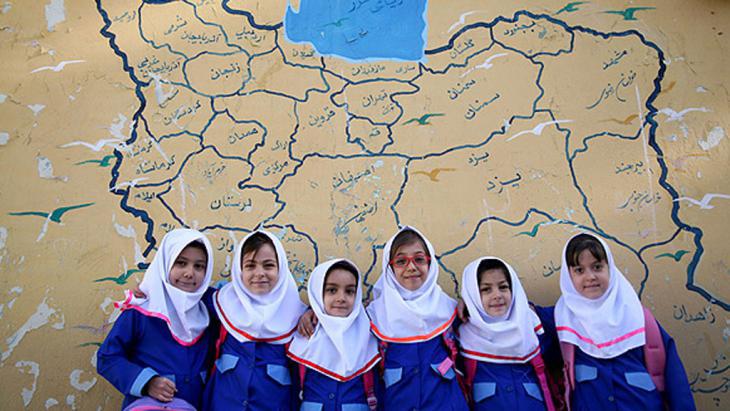
Reasoning that the Azeris are not Turks, just Turkic-speaking, because in bygone days a language was spoken there that is part of the Middle Persian spectrum, or that the Kurds are the descendents of the Medes, the first Aryan people to rule Iran, does not solve the problem. Reasoning such as this is reminiscent of the way the Kemalists referred to the Kurds as Mountain Turks. These are subliminally racist remarks that are of no help to these ethnic groups. Today, they speak Turkish, Kurdish, or Arabic and want their children to be taught at school in their own language as well.
The politicisation of a basic right
Lumping mother-tongue instruction and separatism together is simply using deceptive ideas to politicise a basic right. The right to one′s mother tongue is a human right, one that has been affirmed in numerous international conventions. The constitution of the Islamic Republic of Iran has paved the way for mother-tongue instruction.
Article 15 of the constitution states: ′The official language and script of Iran, the lingua franca of its people, is Persian. Official documents, correspondence and texts, as well as text-books, must be in this language and script. However, the use of regional and tribal languages in the press and mass media, as well as for teaching of their literature in schools, is allowed in addition to Persian.′ This article is not unambiguous. What is meant by ′teaching of their literature in schools′? Literature in the original language?
If so, then pupils must acquire reading and writing skills in that language in order to be able to read literature in the original language and understand it. If so, why is there no explicit mention of mother-tongue instruction? If, however, it refers to the translated literature, this will not lead to the learning of a language.
And what does ′is allowed′ mean in the context of teaching these languages? Is mother-tongue instruction an elective subject, or is it only one of the subjects that should be taught on a private basis? Who bears the costs? Who is responsible for the textbooks, teacher training and the hiring of teaching staff? These are problems which past governments have had neither the ways nor the means of solving. These are problems that are only addressed by presidential candidates in the run-up to elections.
As soon as elections are announced, the candidates come to Tabriz, the city with the largest population of minorities and promise to solve the mother-tongue question as soon as they get into office. The latest president is no exception to this rule.
′Teaching of Iranians′ mother tongue will be officially implemented at school and university level in full implementation of Article 15 of the constitution and to strengthen the culture and literature of the Iranian peoples and to avoid their decline,′ was one of Rouhani′s key pledges.
He even went a step further and said that an Academy of the Language and Literature of Azerbaijan would be opened in Tabriz. Amazed listeners must have been asking themselves how that could be managed, especially as no one had thus far managed to organise language instruction in schools.
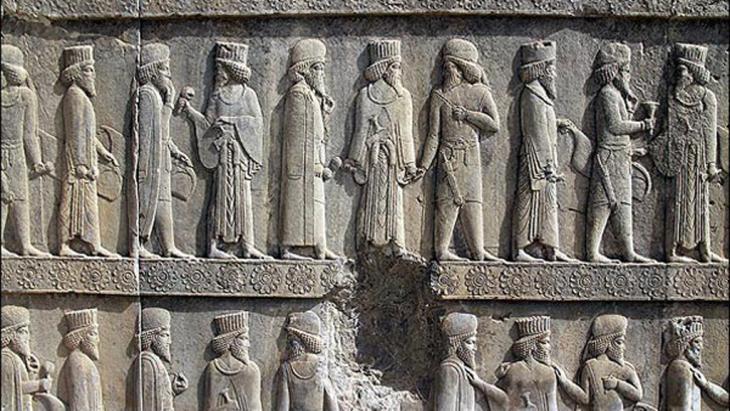
But Rouhani′s words were effective and the votes he received in those provinces where these ethnic groups make up the majority were above the national average. The school year began, but nothing more was said about mother-tongue instruction or even about a draft plan for its introduction. Experts quite rightly point out that there are no books and no teachers to tackle such a mammoth task. There is no point in wondering why, over the course of the past thirty-five years since the adoption of the constitution, no efforts were made to create the conditions needed to implement this aspect of the constitution. And whenever anyone points out that these languages are being taught in neighbouring countries, the response is that there was a desire to avoid importing the separatist attitudes of these countries along with the language. There it is again: the fear of separatism.
Fear of the virus of separatism
Meanwhile, the Kurds of Iraq have achieved their goal. In the autonomous region of Kurdistan, pupils can not only learn their mother tongue in school, they can also be taught other subjects in this language. Moreover, since 2013, after protracted wars and disputes, the Kurdish mother tongue is now available as an elective subject in schools in Turkey.
The Arabic, Azerbaijani and Turkmen languages have been taught in the schools of Iran′s neighbouring countries for many years now. Those in Iran who, despite the shortage of books and teachers for these languages, are reluctant to cooperate with these countries because of a fear of separatism either lack belief in themselves or are reading history backwards.
Which of these countries exerts such a strong democratic attraction that any part of Iran would want to annex itself to it? Never mind the fact that parts of these countries used to be part of Iran and were annexed by the Ottomans and the Russians. If anyone did have annexation aspirations – which is very definitely not the case – it would be more a case of them annexing themselves to Iran.
Quite apart from that, there should be no place in today′s world for thoughts of redrawing borders. At a time when the countries of the European Union are aligning themselves more closely with each other in terms of foreign, economic and culture policy, while at the same time considering their borders inviolable, all talk of redrawing borders is absurd and nothing more than an excuse.
Those people who are still afraid of the idea that borders will be redrawn should consider the following fact: today, after several decades of civil war and invasions, the only things keeping the culture of Afghanistan alive are Iranian books. Were it not for this intellectual blood transfusion, this venerable culture would have faded away.
Why shouldn′t Iran now grasp the similar cross-border opportunities in respect of Arabic, Turkish, Turkmen and Baluchi and reinforce the diversity of languages and literatures within its own borders? Why should the country voluntarily forgo this rich capital? If the first Muslims had shown such reticence in their first encounters with the Greek, Iranian, Syrian, Egyptian and Indian cultures, they would never have been able to bring forth such great minds as Alkindus, Alpharabus, Avicenna, Razi, Ibn Khaldun and Averroes.
Manutschehr Amirpur
© Fikrun wa Fann 2015
Translated from the German by Aingeal Flanagan
Manutschehr Amirpur worked for many years as a simultaneous interpreter for Persian and German and is now responsible for the Persian-language version of Fikrun wa Fann / Art & Thought (Andishe ve Honar).
Source: www.qantara.de
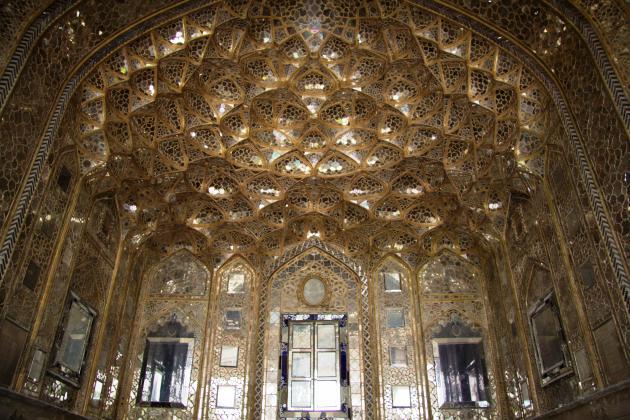
 Photos by Shohreh Karimian and Johannes Ziemer
Photos by Shohreh Karimian and Johannes Ziemer
